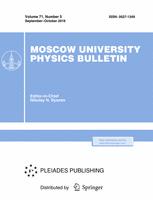In accordance with the Heisenberg uncertainty principle, a similar dynamics (behavior) for complex biosystems is postulated. Five peculiar properties and thirteen differences of these specific three-type systems (complexity) from traditional deterministic and stochastic systems determine the need for introducing the uncertainty principle for these specific systems. The value of the special boundary volume of the phase space, V$_{min}^G$, (which is considered as quasiattractor) inside of which the state vector of a biosystem moves chaotically and permanently, is the right side of this inequality. The volumes V$_{min}^G$n andV$_{max}^G$ really represent the peculiar properties of each dynamic biosystem (or each three-type system) as complexity. Particular examples from biomechanics prove the impossibility of using the deterministic or stochastic approach for the description of complexity, and only methods of the new theory of chaos (self-organization) can be useful for the description of complex biosystems. The possibilities of the practical application of this theory in various fields of biology and medicine are also discussed.
Institute for Natural and Technical Sciences, Surgut State University, pr. Lenina 1, Surgut, 628405, Russia



